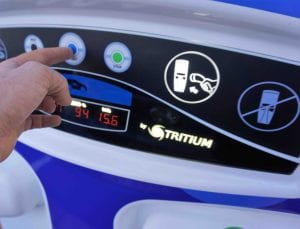People are puzzled by the inexplicable rise of Tesla. Many had predicted its demise. Short sellers were oozing to make a killing once its stocks would tumble. Instead, its stock price has risen, and the company has gained a market capitalisation bigger than much larger auto makers in the US and overseas.
Investors now firmly believe it is worth far more than GM, Ford, even Daimler or VW, the last one making 10 million cars annually. There is speculation that Tesla could be worth as much as $6 trillion in 4 years. What explains the unexplainable?
As recently reported in a Feb 06 article by Giles Parkinson in The Driven, “… some analysts believe that we’ve seen nothing yet, and if Tesla can master its full self-driving technology, the stock could be worth up to $4 trillion by 2024.”
The Driven points to forecasts from major investors and analysts including Ron Baron who says Tesla’s revenues could top $1 trillion and Ark Investment Mgmt. LLC who says its stocks could jump 10-fold from the current $800 to $7,000 in 5 years.
In a piece on its website, Ark Investment Mgmt. speculates a “bull case” where the stocks could rise to $15,000, or even $22,000 by 2024. The catch is whether and when Tesla can deliver autonomous driving technology.
Once it eliminates the driver, Tesla can offer rides at a fraction of the current cost per mile of the likes of Uber and Lyft. According to Ark Invest, that would result in a market capitalization of $4 trillion. Tesla was worth around $130 billion last time we checked, with wide daily fluctuations.
Ark Invest’s speculation is clearly not about how many cars Tesla can produce or mundane issues like that but how soon can it master the science, the art – and overcome the regulatory hurdles – to introduce autonomous driving technology.
It is, of course, not a given that Tesla will be the first or the only one given the vast investments going into developing autonomous electric vehicles or AEVs by the likes of Google’s Waymo, GM’s Cruise, and countless others.
By now, everybody realizes that this is not an easy task.
Ark Invest is not convinced that Tesla can get it right, or win that race, which explains why it gives Tesla a 30% chance. But it says if Tesla manages to get it right, get it first, and successfully launch autonomous taxi service – Elon Musk, its CEO calls it robo-taxi business – then the value added could be huge. That, of course, is a lot of ifs. Ark Invest says,
“A fully autonomous taxi network could break the mold of a traditional automotive manufacturer’s business model completely.”
What is fascinating about this scenario is its transformative nature.
“Tesla could shift from a model of one-time transactions at hardware-like margins to a model of recurring transactions at software-like margins, charging passengers per mile and taking a platform fee.”
In the article posted on its website, Ark Invest speculates that Tesla could “set rates comparable to the $2.50 per mile that Uber and Lyft charge today, dropping them to $1 per mile in 2023.”
In this case, “Tesla would take a 50% cut of gross revenues from autonomous taxi networks, higher than the 20-30% cut that Uber and Lyft enjoy today.” It assumes that robo-taxi service can begin as early as 2021, which is only one year from now. As always, one must read the fine print.
Whether in 2021 or a few years later, this is the vision of futurists like Stanford University’s Tony Seba who are convinced that it is only a matter of time before it happens, and when it finally does, the cost of shared intercity travel will plummet to the point where very few urbanites would want to own personal cars. The date may be around 2030, or so they say.
Both oil and car companies are looking into such scenarios and who will gain and lose when and if it happens. For oil companies, it suggests lower and falling demand as EVs and AEVs begin to make a dent in petrol-driven car sales over time.
That is more or less a given. For auto companies, it suggests a massive shift not only to EVs but AEVs and shared transportation models eventually replacing car ownership for all except those living in remote, low population density areas.
When and if it happens, few drivers – certainly in congested urban centers where over half of the world’s population currently live – will miss the long lines at the DMV, hassle of parking, stress of driving, license fees, insurance and car maintenance or haggling over the price in car showrooms – not to mention the rapid depreciation of their investment once they drive off the dealer’s parking lot.
Fereidoon Sioshansi is president of Menlo Energy Economics, a consultancy based in San Francisco, CA and editor/publisher of EEnergy Informer, a monthly newsletter with international circulation. He can be reached at [email protected]









